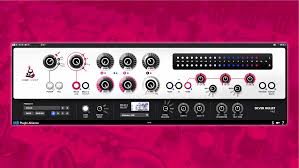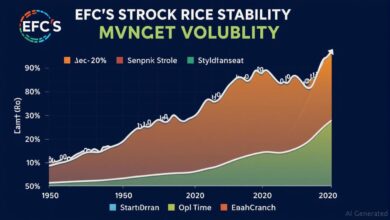What Is the Average Rice Purity Score and Why Do People Care About It?

Have you ever heard friends talking about their Rice Purity Test scores and wondered what all the fuss is about? The test has become a popular trend, especially among students and young adults, as a playful way to measure life experiences. But one question comes up again and again: what is the average rice purity score, and how does it change by age?
In this article, we will dive into the history of the test, what the scores actually mean, and why people are so interested in the average rice purity score. We will also explore how age affects the results, making this a fun yet insightful look at one of the internet’s favorite quizzes.
What Is the Rice Purity Test?
Before we talk about averages, let’s take a step back and look at what the Rice Purity Test actually is. Originally created by Rice University, the test was designed as a lighthearted survey to see how “pure” students were when it came to life experiences.
The quiz contains 100 questions, covering everything from mild activities like holding hands or kissing to more serious ones involving relationships, substances, and risky behaviors. Each “yes” answer lowers your score, so the higher your final number, the more “innocent” you are considered to be.
Why the Test Became So Popular
The Rice Purity Test started as a fun tradition among college students but has since exploded in popularity online. Today, teenagers, young adults, and even older individuals take it out of curiosity. Social media has also fueled the trend, with people sharing their scores, comparing results, and debating what numbers say about someone’s personality.
Part of the appeal lies in its playful nature. It is not meant to be scientific, but it gives people a chance to reflect on their experiences, laugh with friends, and sometimes spark interesting conversations.
Understanding the Scoring System
The Rice Purity Test score ranges from 0 to 100. A score of 100 means you have done almost nothing on the list, while a score closer to 0 means you have experienced nearly everything.
- Scores above 90: Often considered “very pure” or innocent.
- Scores between 70–89: Still fairly pure but with some common experiences.
- Scores between 40–69: Average range for many young adults.
- Scores between 20–39: Suggest a wide range of experiences.
- Scores below 20: Very rare, usually indicating someone has done almost everything listed.
With this scale in mind, it becomes easier to talk about what the average rice purity test score looks like for different groups.
What Is the Average Rice Purity Score?
When people ask about the average rice purity score, they are usually curious about where they stand compared to others. Based on online surveys and self-reported data, the average score tends to fall in the 40–60 range.
This makes sense because most people have experienced some things on the list but not all. Few individuals stay in the 90s past their teenage years, and very few drop below 20 unless they are much older or have lived unusually adventurous lives.
Average Rice Purity Test Score by Age
Now let’s break it down further and look at how age influences the results.
Teenagers (13–17)
The average rice purity score by age for teenagers usually falls between 70–90. At this stage, many are still in high school, with limited exposure to alcohol, relationships, or adult situations. It is normal for teens to have high scores, and in fact, that is often expected.
College Students (18–22)
This group tends to score lower. The rice purity test average score by age in this range is typically 40–65. College is often a time of exploration, independence, and new experiences. Many students try things for the first time, which lowers their scores.
Young Adults (23–30)
By this stage, the average rice purity test score often ranges from 30–50. With more years of independence and adult responsibilities, people have had time to check off more items on the list.
Adults (30 and older)
For adults over 30, scores vary widely. Some may remain in the 40–60 range, while others drop lower, depending on lifestyle choices. The main point is that as people age, scores naturally decline, reflecting accumulated experiences.
Why People Compare Their Scores
Comparing scores has become almost like a game. People ask friends, “What’s your Rice Purity score?” and laugh at the differences. For some, it’s a way of bonding. For others, it’s about curiosity and self-reflection.
The comparisons often lead to discussions about experiences, choices, and values. And while the test is not meant to judge anyone, it often sparks conversations that help people understand each other better.
Misconceptions About the Test
It is important to clear up a few misconceptions about the Rice Purity Test:
- It is not scientific – The test does not measure morality, character, or worth.
- High scores are not “better” – Being more “pure” does not necessarily mean happier or healthier.
- Low scores are not “bad” – A lower score just reflects more experiences, not negative qualities.
Understanding this helps people enjoy the test without putting too much pressure on themselves.
The Role of Social Media
One big reason the rice purity test average score became such a popular question is social media. TikTok, Twitter, and Instagram are full of videos where people reveal their scores. Some trends even challenge couples or groups of friends to compare results on camera.
This visibility has made the test a cultural talking point. The shared experiences give people a sense of community, especially among teenagers and college students who are figuring out their place in the world.
How Personality Influences Scores
While age is the biggest factor, personality also plays a role. Some people are naturally more adventurous and curious, leading to lower scores earlier in life. Others are more cautious, preferring stability and tradition, which keeps their scores higher.
This variation explains why two people of the same age can have very different results. It shows that the average rice purity score by age is just a guideline, not a strict rule.
Should You Worry About Your Score?
Many people take the test and then wonder if their score is “normal.” The truth is, there is no right or wrong number. Everyone’s journey is different.
The average rice purity test score gives a general idea of where most people fall, but it should never be used to measure self-worth. The test is meant to be fun, not stressful.
Why Averages Matter
Even though the test is not scientific, knowing the averages can still be useful. It helps people feel reassured that they are not alone. For example, a teenager with a score of 85 might feel comforted to know that most people their age have similar scores. Likewise, a college student with a score of 50 can see that they fall within the normal range for their group.
Cultural Significance of the Test
The Rice Purity Test has become more than just a quiz. It represents a cultural shift in how people talk about experiences, relationships, and adulthood. Instead of avoiding these topics, people now openly discuss them in a playful context.
In many ways, the test has become a rite of passage, especially for young adults. Sharing scores is almost like a modern version of swapping stories at a sleepover.
Criticism of the Test
Of course, not everyone loves the Rice Purity Test. Critics argue that it oversimplifies life experiences and might make some people feel judged. Others point out that the test was originally created in a very specific cultural context and may not apply fairly to everyone.
Despite these criticisms, the test remains popular because most people understand it as a lighthearted game rather than a serious evaluation.
Final Thoughts
So, what is the average rice purity score? For most people, it falls in the 40–60 range, but the number changes with age. Teenagers often score in the 70s or higher, college students drop to the 40s or 50s, and adults vary widely.
The key takeaway is that the Rice Purity Test is not about being right or wrong. It is about fun, reflection, and connecting with others. Whether you score high or low, the important part is understanding that your number is just one small snapshot of your life experiences.
In the end, the average rice purity test score by age is simply a fun benchmark, not a judgment. So the next time someone asks about your score, smile, share if you want to, and remember that everyone’s journey is unique. blogvista.co.uk/



